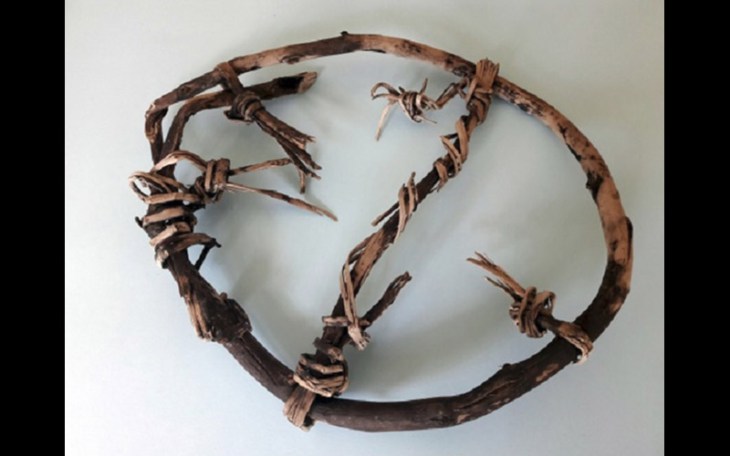TNO, “World’s Oldest Snowshoe Found”, 16 September 2016:
The world’s oldest snowshoe, made in the late Neolithic age, over 5,800 years old— made of birch wood and twine, has been discovered at an altitude of 3,134 meters (10,280ft) on the Gurgler Eisjoch glacier, close to Italy’s border with Austria.
“It is the oldest snowshoe in the world so far discovered, dating to around 5,800 years ago,” scientists said in a statement.

According to a report on the Archaeology News Network, the ice and freezing temperatures of the glacier had provided “ideal conditions for the preservation of organic material.”
The shoe, which consists of an oval-shaped frame with strands of twine tied across it, was found by Simone Bartolini, a cartographer from Italy’s Military Geographical Institute, who was mapping the border with Austria.
He came across it in 2003 but for the next 12 years kept it in his office in Florence as a curiosity.
“At first I thought it was maybe 100 years old and was a snowshoe that belonged to a farmer who lost it while driving cattle. I kept it in my office as a keepsake,” Dr. Bartolini said at a press conference this week in Bolzano, the capital of the autonomous, Germany-speaking province of South Tyrol.
It was only last year that it dawned on him that it could be much older and more significant. He gave it to archaeologists to study.
The discovery was made close to where the frozen, mummified remains of a Neolithic hunter, nicknamed “Otzi,” were found by two German hikers 25 years ago.
That mummified corpse has revealed a wealth of information on what people of the period wore and ate, how they hunted and armed themselves and how they traveled.
Scientists at the press conference said the discovery of the snowshoe was “exceptional.”
“The shoe is evidence that people in the Neolithic period were living in the Alps area and had equipped themselves accordingly,” said Dr. Catrin Marzoli, the director of the province’s cultural heritage department.
It was unclear why people were traveling through such an inhospitable region, she said. They may have been hunting animals, fleeing enemies from a rival tribe, or visiting ancient pre-Christian sites of worship.
